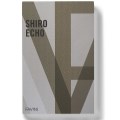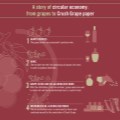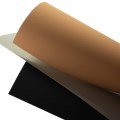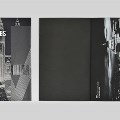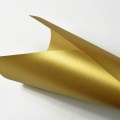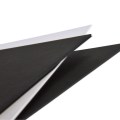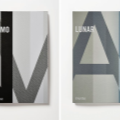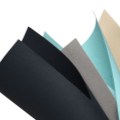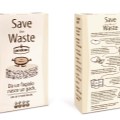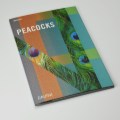If this is your company, CONTACT US to activate Packbase™ software to build your portal.


From cocoa, we obtain one of the most desired and delicious foods: chocolate, also called “food of the gods” by the Mayan population, who were the first to cultivate the cocoa plant in around ‘600 AD [1]. Where its consumption was reserved only for the most privileged classes of the population. Even for the Aztecs, the cocoa beans were deemed so precious that they were used as currency.
Cocoa is obtained from the seeds of Theobroma cacao, a plant native to Central America. Its seeds, called beans, are contained within a fruit called the cocoa pod. [2]
In nature, cocoa beans contain the precious ingredient used for chocolate and now, thanks to the industrial symbiosis between Favini and Domori, the thin skins of the beans have become a sustainable raw material for the production of the ecological paper Crush Cocoa and is used for the Easter packaging for Domori products.
Domori epitomizes Italian excellence in the production of chocolate from the finest cocoa. The name “Domori”, which in Venetian dialect means “two moors” – the common local name given to the two statues that strike the time on the large bell at the top of the clock tower in Piazza San Marco in Venice – is in the vision of Gianluca Franzoni the founder of the company, representing the two seeds: Cocoa and coffee. A perfect combination for Domori, which has now part of the Illy Group. [3]
Domori for biodiversity, saving the finest cocoa from extinction
Domori was the first chocolate company to use only fine cocoa and to produce chocolate from Criollo cocoa, which is the rarest and most valuable. A courageous choice as it is considered to be the most delicate, rare and least productive varieties. Born from their desire and intuition to save the most valuable cocoa varieties in the world from extinction, while maintaining authentic aromas and making it accessible to great chocolate connoisseurs all over the world.
The Hacienda San Josè, Domori preserves seven varieties of the rare Criollo cocoa, creating a world heritage habitat for its biodiversity.
This Domori approach is similar to that of Favini, who contribute to the protection of forests with environmental projects reported on their Sustainability Channel. It is also in line with the UN 2030 Agenda for Sustainable Development, which includes environmental sustainability and the careful use of the planet’s resources amongst its 17 objectives. In particular, goal 15 of the agenda aims to protect, restore and promote sustainable use of the terrestrial ecosystem, with special attention to the protection of forests and biodiversity. [4]
Domori for sustainability, from the plantations to ecological packaging
Since its inception, the Turin-based company has protected the precious varieties of cocoa, their natural habitat and the farmers who work there. With a view to sustainability, Domori manages its supply chain starting from the plantations located in South America and Central America, as well as having its own plantation. [5]
Domori pays particular attention to sustainability, from the choice of raw material manufacturers to the materials used for the packaging of its products.
In line with a circular economy strategy, Favini and Domori collaborated in the development of an ecological paper with cocoa processing waste, stimulating an industrial symbiosis.
From the perspective of environmental sustainability and attention to the use of resources, Domori has chosen to create the packaging of their Quantum line with a unique and ecological material: Crush Cocoa paper that has been made specifically by Favini by creatively reusing Domori’s own chocolate production residues according to circular economy principles.
The by-products used by Favini for the production of the ecological paper Crush Cocoa are the skin of the beans, which is a waste created during the processing of chocolate.
In the cocoa processing, the beans are fermented, dried, cleaned, roasted and then decorticated, this last step separates the skin from the “naked” bean, called grain. The grain is crushed in a machine built with granite stones and milled, passing from solid to liquid state: cocoa butter is obtained, the main ingredient of chocolate. [6]
During these transformation processes of the bean into cocoa butter and the subsequent processes to produce chocolate, waste is generated. The processing residues are the skins of the cocoa beans, which are recovered and upgraded by Favini following the principles of circular economy, to become a sustainable raw material for the production of Crush Cocoa paper.
Domori and Favini for a multi-sensory experience, chocolate and paper that captivates
For Easter 2020, Domori presents the new packaging line with eco-friendly materials. For the production of the paper for this sustainable packaging, Domori asked Favini, who has exemplary know-how in the field of development and production of ecological papers with agro-industrial by-products according to the circular economy model using their Crush process.
From an industrial symbiosis between Domori and Favini, Crush Cocoa was created, an innovative paper produced by elevating a waste material into a precious raw material, with an upcycling process, using the skins of cocoa beans from Domori plantations, in partial substitution of tree cellulose.
The collaboration between the paper sector of Favini and the food sector of Domori to transform what is a waste for one and re-evaluating it into a raw material for the other, has given birth to a new high-quality ecological paper capable of stimulating the senses.
In addition to sustainability, innovation and excellence, Domori and Favini also have in common the production of high quality products – chocolate and paper – both capable of stimulating the senses.
Crush Cocoa is a paper that comes from the raw ingredient of chocolate, the cocoa bean, and invites us to be perceived by multiple senses: not only by sight, but also using touch we can “savour” the distinctive characteristics of this innovative paper.
Just as chocolate stimulates multisensory experiences in the consumer, this Favini paper has the ability to stimulate sight and touch and with imagination also the appetite, thanks to Crush Cocoa.
For Domori, in fact, chocolate has the ability to create a world of delicate flavours and aromas associated with that of coffee or tasting a fine wine. For this reason, Domori has created an aromatic palette of varieties of flavours and a tasting guideline code for the quality and comparison of the varieties. It is a sensory analysis code similar to those used for wine, coffee and tea. [7]
Did you like the story of industrial symbiosis between the paper and chocolate sector for the production of Crush Cocoa?
Discover all the stories of circular economy and creative reuse in the Circular Economy section of our blog, where you can find out how Favini produces ecological papers by upcycling by-products from other industrial chains: from the agro-industrial sector with Crush, to leather with Remake and the textile sector for Refit.
[1] eueochocolate.com
[2] readcacao.com
[3] domori.com
[4] sustainabledevelopment.org
[5] domori.com
[6] cioccolatitaliani.it
[7] youtube.com














